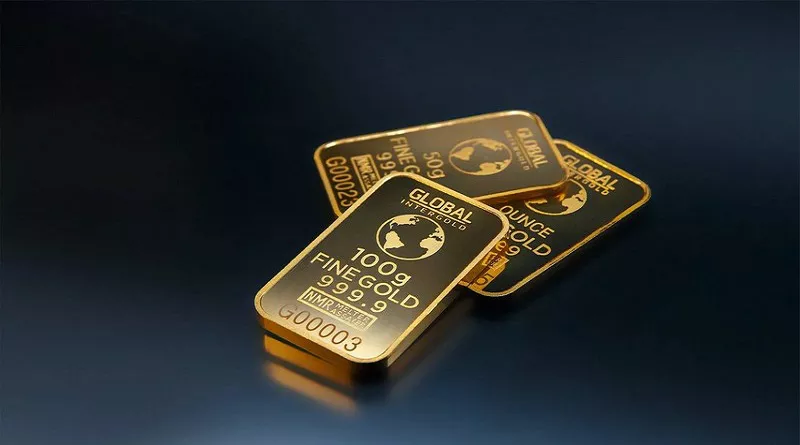I. Understanding the Global Fascination with Spot Gold
Spot gold, traded in the present moment, holds a unique allure in the world of finance and investments. The demand for this precious metal is influenced by a myriad of factors, each playing a crucial role in shaping market dynamics and impacting gold prices. Delving into the complexities of global demand for spot gold unveils a narrative shaped by economic, geopolitical, and cultural forces.
1. Economic Forces Driving Demand
Emerging Markets and Industrial Demand: Emerging markets, with their growing economies and industrial sectors, contribute significantly to the demand for gold. Beyond its traditional role as a store of value, gold finds utility in various industries, including electronics and healthcare, further bolstering its economic demand.
Inflation Hedge and Economic Uncertainty: Gold is often sought as a hedge against inflation and economic uncertainty. During times of economic instability, investors turn to gold as a safe-haven asset, driving up demand and prices.
2. Geopolitical Factors at Play
Global Tensions and Safe-Haven Appeal: Geopolitical tensions and uncertainties amplify the appeal of gold as a safe-haven asset. Investors flock to gold in times of geopolitical turmoil, seeking refuge from market volatility and currency risks.
Central Bank Reserves: Central banks around the world play a pivotal role in the global demand for gold. Diversifying reserves and reducing dependence on traditional currencies, central banks regularly engage in gold purchases, influencing overall demand.
3. Cultural Significance and Jewelry Demand
Cultural Traditions and Gold Jewelry: Gold holds immense cultural significance in various societies, especially in Asia and the Middle East. The demand for gold jewelry during cultural celebrations and events contributes significantly to the overall global demand for spot gold.
Weddings and Festivals: Weddings and festivals often drive spikes in gold demand, as gold jewelry is a popular gift and symbol of prosperity in many cultures. The cultural importance of gold in these contexts sustains consistent demand.
4. Financial Instruments and Investment Demand
Gold ETFs and Investment Portfolios: The rise of financial instruments like gold exchange-traded funds (ETFs) has transformed the landscape of gold investment. These instruments allow investors to gain exposure to gold without physically owning the metal, contributing to the overall demand for spot gold.
Speculative Trading and Market Sentiment: Speculative trading and market sentiment play a significant role in short-term fluctuations in gold demand. Traders responding to global events and economic indicators can drive rapid changes in market dynamics.
II. Impact on Gold Prices
1. Supply and Demand Dynamics
Supply Constraints and Mining Challenges: Global demand for spot gold intersects with the challenges of gold mining. Supply constraints, driven by factors such as mining difficulties and exploration costs, can impact the delicate balance between supply and demand, influencing prices.
Market Perception and Price Volatility: Perceptions of gold as a store of value and a safe haven contribute to its price volatility. Changes in market sentiment can lead to sudden spikes or dips in demand, influencing spot gold prices.
III. Navigating Frequently Asked Questions (FAQs)
1. Why is gold considered a safe-haven asset?
Gold is considered a safe-haven asset due to its historical role as a store of value. It tends to retain its worth during economic downturns and uncertainties, making it an attractive choice for investors seeking stability.
2. How does geopolitical instability impact gold prices?
Geopolitical instability increases the demand for safe-haven assets like gold, leading to higher prices. Investors turn to gold to hedge against risks associated with global conflicts or uncertainties.
3. What role do central banks play in the gold market?
Central banks influence the gold market by regularly buying and selling gold to diversify their reserves. Central bank actions can significantly impact overall demand and prices.
4. Can cultural events and traditions affect gold prices?
Yes, cultural events and traditions, especially those involving gift-giving, weddings, and festivals, can impact gold prices by driving increased demand during specific periods.
5. How do economic indicators influence gold demand?
Economic indicators such as inflation rates and economic uncertainty can drive gold demand. Investors turn to gold as a hedge during times of economic stress, impacting overall demand.
6. Are there risks associated with investing in gold ETFs?
Investing in gold ETFs carries risks, including market fluctuations and potential exposure to counterparty risk. Investors should carefully assess these risks before including gold ETFs in their portfolios.
7. What factors contribute to the long-term value of gold?
Factors such as global economic conditions, inflation rates, and overall market sentiment contribute to the long-term value of gold. Its role as a store of value and cultural significance also play key roles.
8. Can changes in mining technology impact gold prices?
Advancements in mining technology can impact gold prices by influencing the ease and cost-effectiveness of gold extraction. Changes in mining efficiency can affect the overall supply of gold.
9. How do traders and speculators influence short-term gold prices?
Traders and speculators react to short-term events, economic data releases, and market sentiment, causing rapid fluctuations in gold prices. Short-term demand dynamics are often influenced by speculative trading.
10. Is gold a suitable investment for long-term wealth preservation?
Yes, gold is often considered a suitable investment for long-term wealth preservation due to its historical stability and ability to act as a hedge against economic uncertainties. Investors often include gold in diversified portfolios for wealth preservation purposes.


